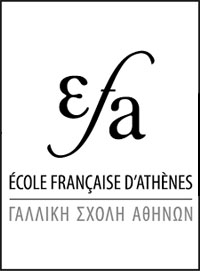ATHENS - 2005
Informations Générales
Numéro de la notice
4294
Année de l'opération
2005
Chronologie
Mots-clés
Nature de l'opération
Institution(s)
Toponyme
Notices et opérations liées
2005
Description
4 Xenophontos Street. O. Zachariadou, E. Giatroudaki, and K. Papagiannakis (Γ ΕΠΚΑ) report on excavations for the construction of the new Cypriot embassy. Mycenaean and Late Geometric sherds were collected from the deepest levels of the excavation, but no building remains of these periods were identified.
Two successive road layers were uncovered, with traces of wheel ruts and Classical and Geometric pottery.
Road I (length 22m, width 5.36m) had 11 surface layers dating from the early Hellenistic to Early Roman periods. A child enchytrismos was found in contact with the eastern retaining wall of the road (first-century BC to first-century AD). The west retaining wall turned north and met another road (II), 1.9m in length and 1m wide, with another Hellenistic child enchytrismos in contact with it.
A Classical arterial road (III) in the northwest corner of the plot ran northeast-southwest with retaining walls of schist (length 23.8m, width 4.54). Five road surfaces date from the fifth and fourth centuries BC. In Early Hellenistic times the axis of the road changed westwards, the older retaining walls and the surface were covered and new retaining walls built from cut stones, probably for flood protection (the fills east of the road contained pebbles and silt). Several funerary kioniskoi were built into the walls.
The north part of the plot contained extensive Hellenistic workshop remains, Megarian bowls and a few lamps (including moulds). Deeper in the same area were five unaccompanied burials of dogs. In the Roman period the area continued in use: a series of four limestone pillars form part of the aqueduct excavated on Amalias Avenue during the construction of the Metro.
The centre of the plot is crossed by a northeast-southwest channel (length 19.8m, internal width 0.56m) built of stones and earth in the Early Roman period.
Late Roman and Byzantine building remains were found at the south of the plot.
Auteur de la notice
Robert PITT
Références bibliographiques
ADelt 60 (2005) Chr. B1 94-96
Date de création
2014-07-04 00:00:00
Dernière modification
2023-10-17 10:33:21








